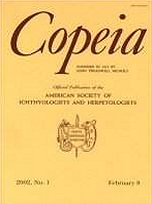Our ability to understand predator-prey systems is often limited by a lack of detailed information on fundamental aspects of organismal natural history. It is particularly difficult to gather quantitative data on the behavior of sit-and-wait predators, which are generally secretive and feed infrequently. In this study I use video surveillance equipment to record natural interactions between a predator, Crotalus horridus, and its prey. From observations of 17 individuals over two years, a total of 87 encounters with prey were recorded, with snakes successfully attacking 13% of prey items that came within striking distance. Snakes stayed at ambush sites for a mean of 17 hours and were estimated to feed between 12 and 15 times over the course of a season, consuming between 1250 and 1550 g of prey per snake, mostly woodland rodents (Peromyscus, Microtus, Clethrionomys, Tamias, and Sciurus). These data represent some of the most detailed quantitative measures on snake foraging behavior and predator-prey interactions available and can be used to inform general ecological and behavioral models in similar systems.
How to translate text using browser tools
1 May 2006
Fixed Videography to Study Predation Behavior of an Ambush Foraging Snake, Crotalus Horridus
Rulon W. Clark
ACCESS THE FULL ARTICLE





